
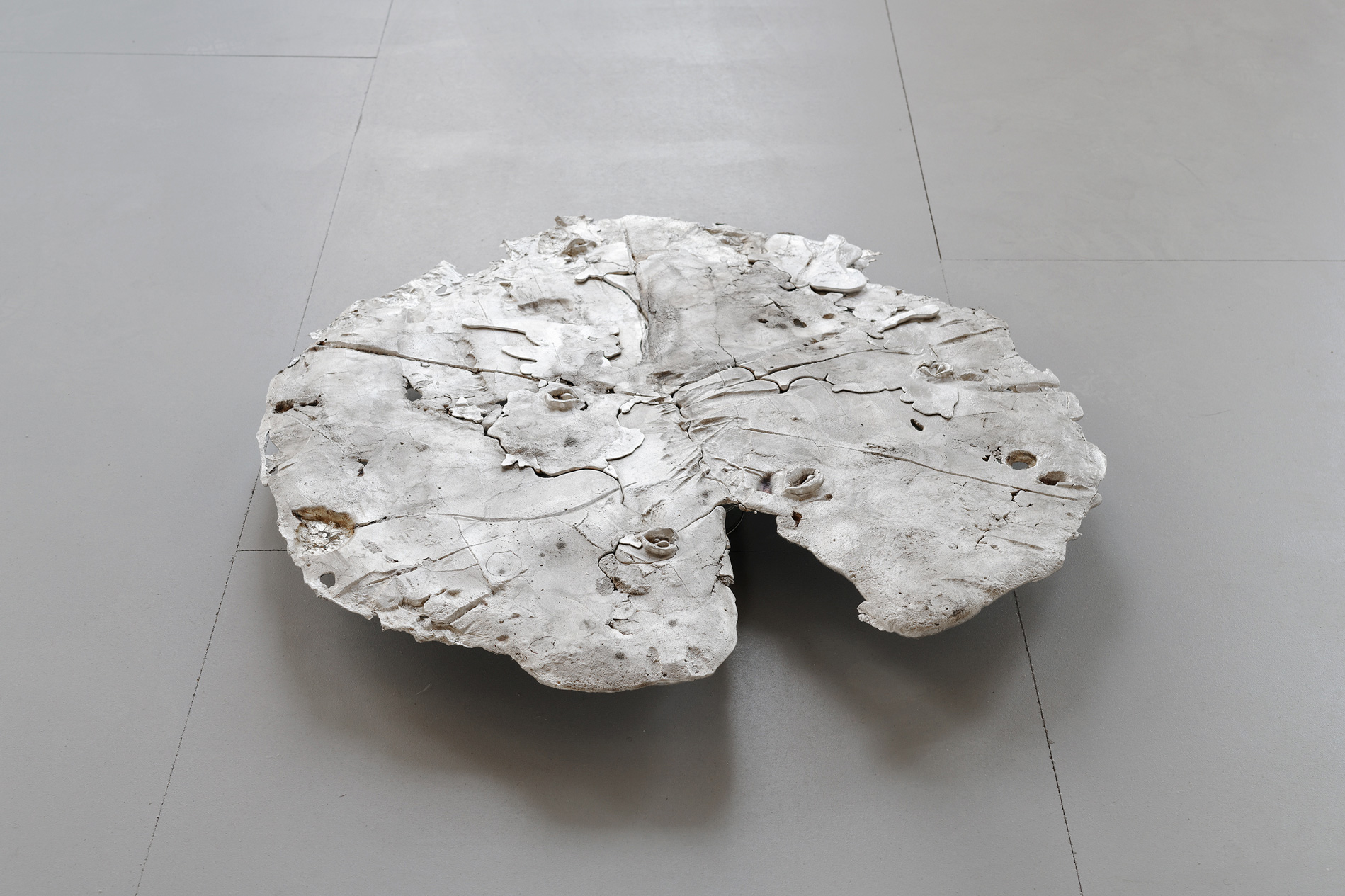
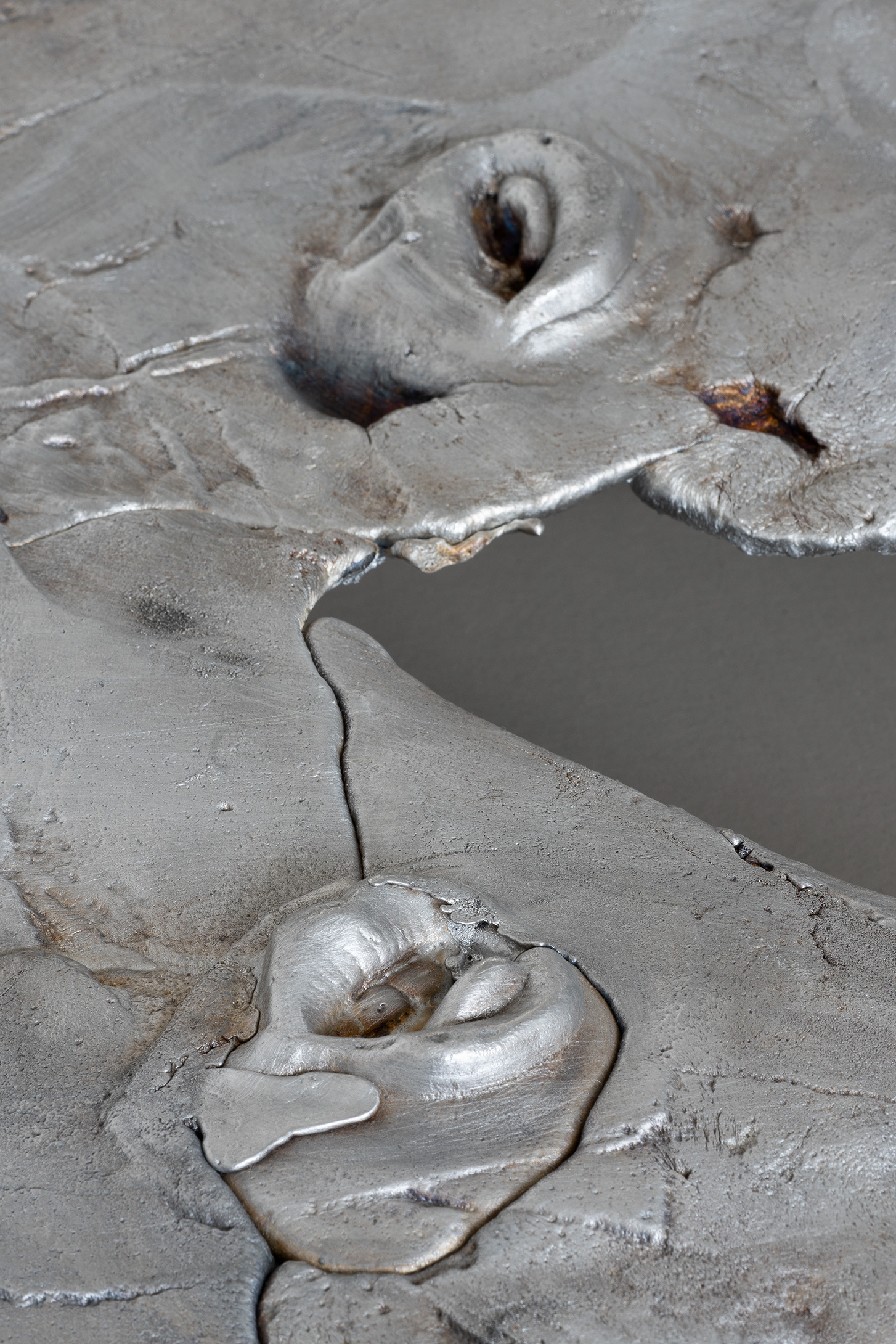
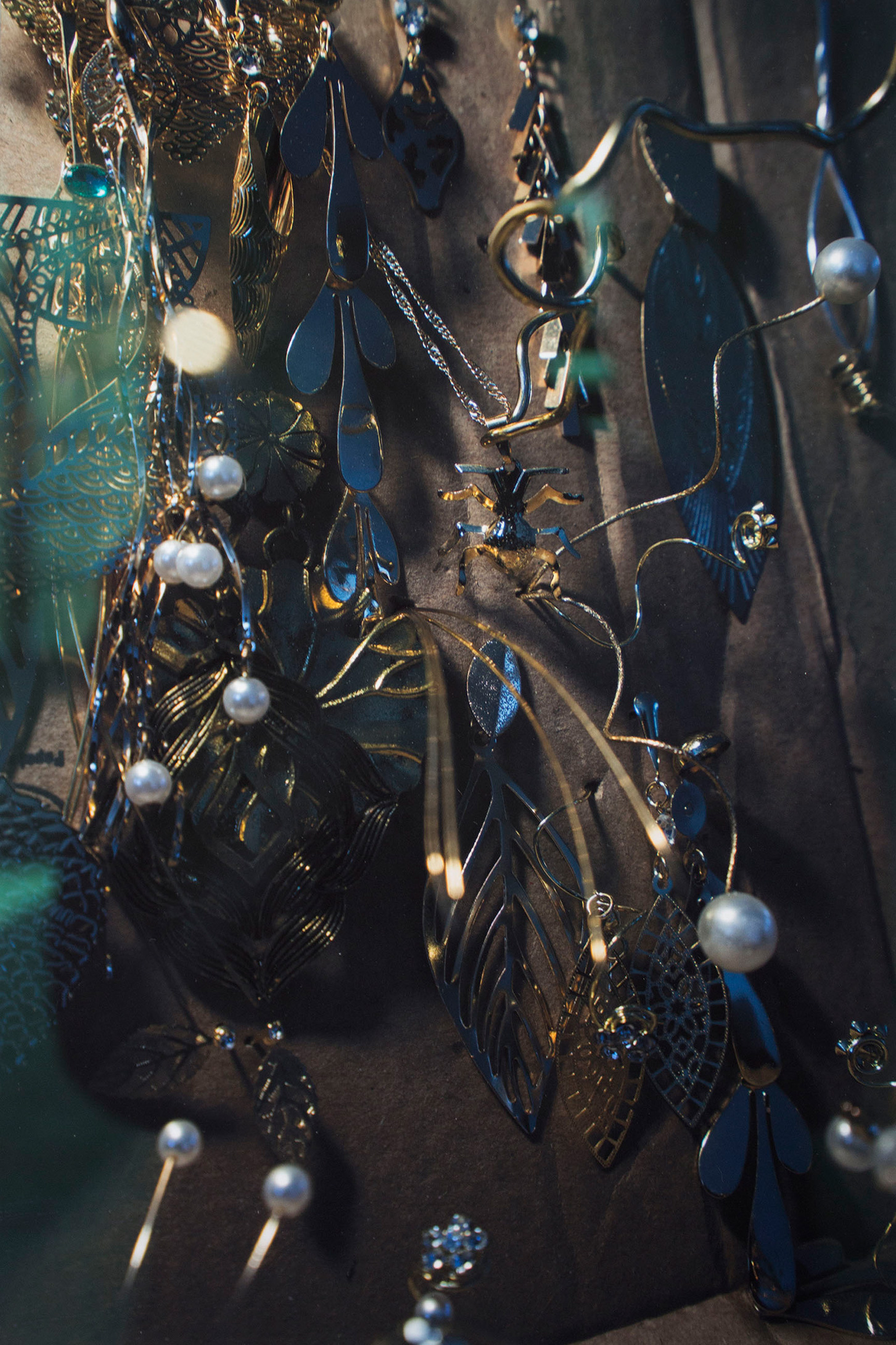
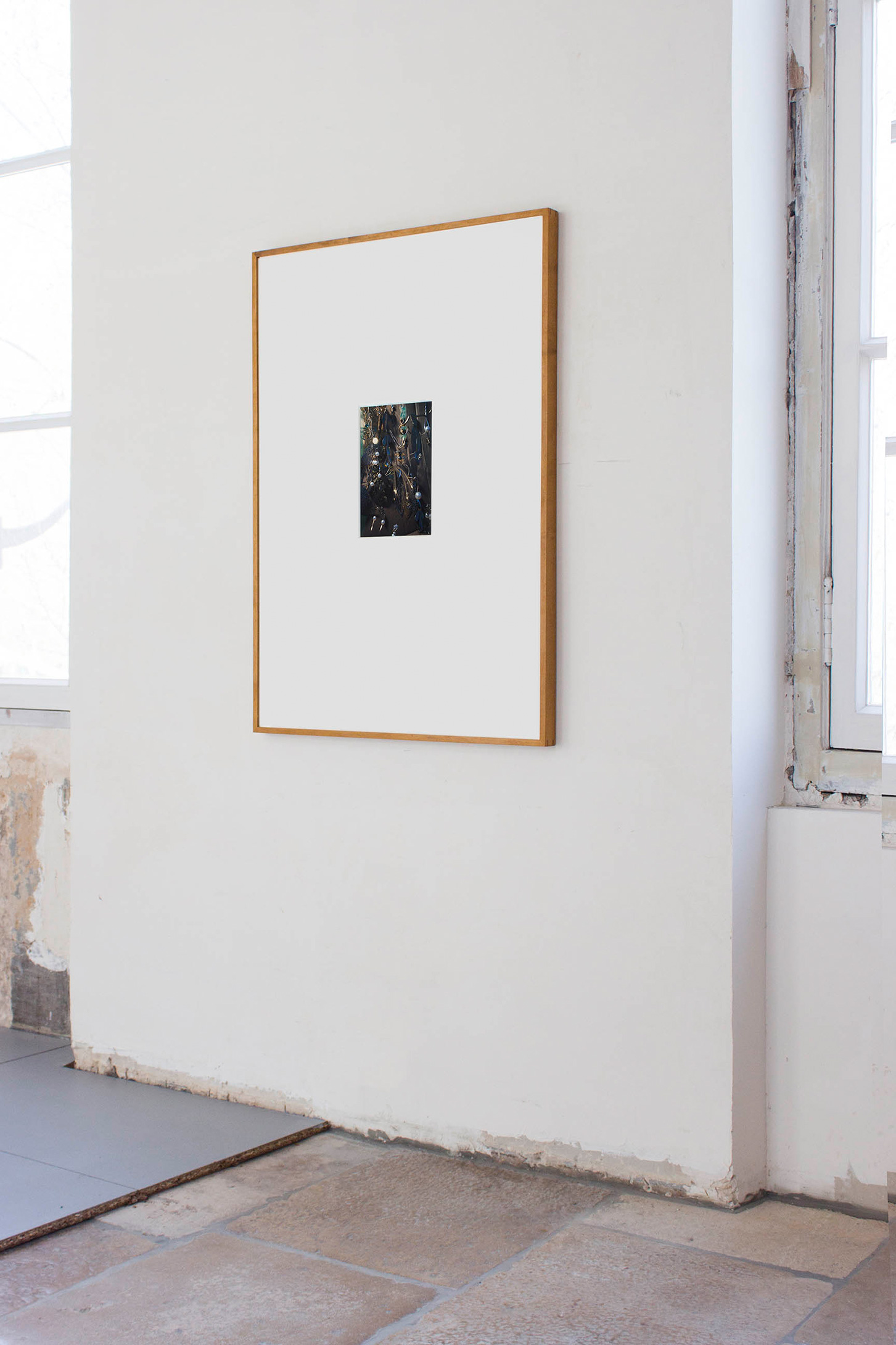
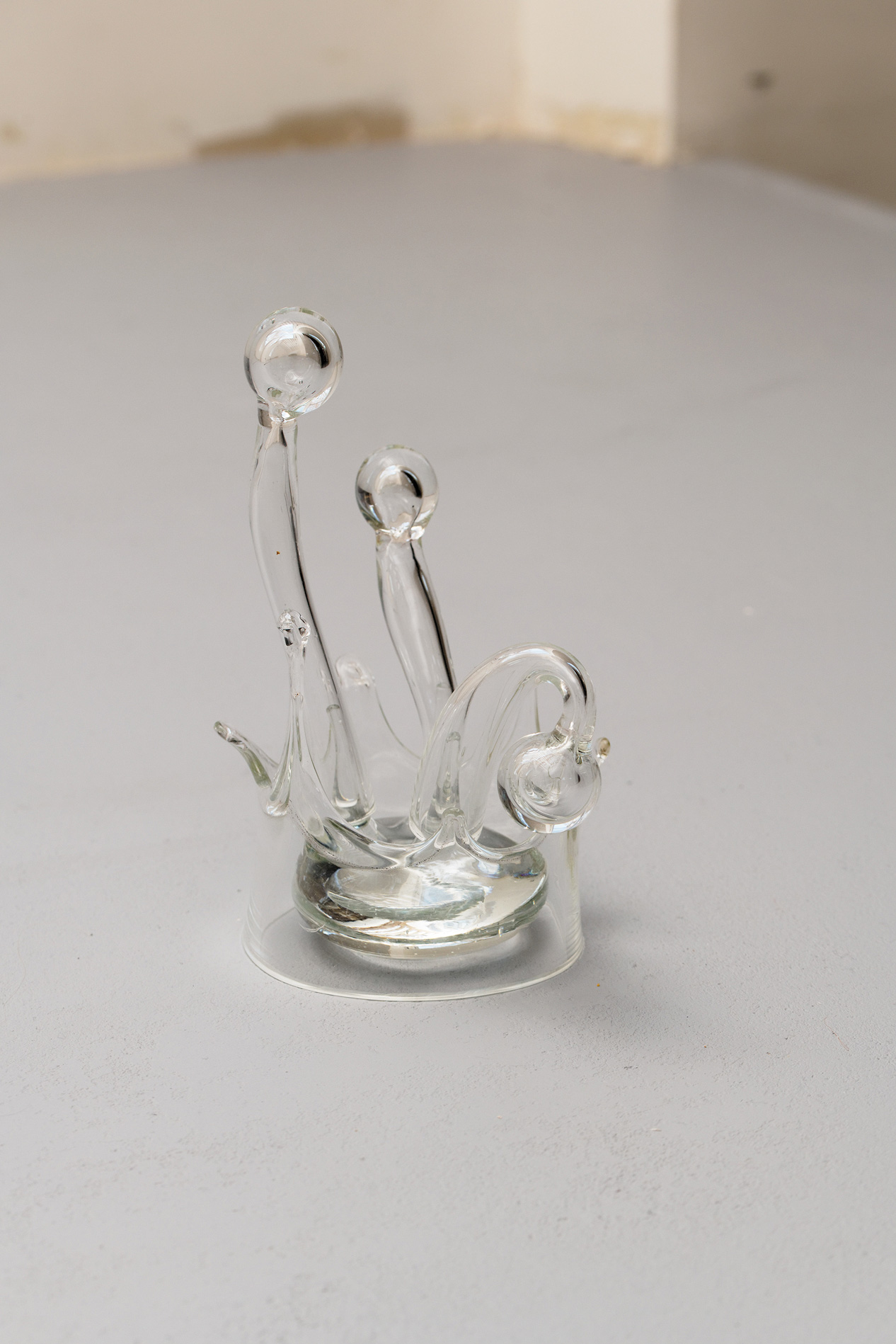
1,2,3 — Catching flies not feelings, alluminum, Ø 105 x 10 cm, 2018.
4, 5 — You never know if the bee that’s coming will pollinate you or kill you, C-print, frame,102 x 50 cm, 2019.
6 — Old people, glass. 35 x 17 x 17 cm, 2019
Narcissus’ fist sinks in the muddy bottom of the pond whose surface still mirrors a reversed image of youth.
Swamps are places of slow fertility, whose shapes devel- op slowly and per accumulation, sediments depositing on each other and characters evolving through sickly mod- ular structures repeating themselves. The sexual allure is calm and deadly, embedded within a bionetwork of flowers showing off their open buttholes and with them the genetic estate of their species. In the swamp, horniness doesn’t occur in horny uncontrollable rushes. A quiet sex appeal pervades the entire biosystem and rests under the water surface. When the wind blows or the rain falls one can listen everything moaning. The water is turbid, but not dirty, so
full of life and organisms that makes it dark and slimy, just a step from being solid. On some parts of the surface a variety of water grass grows, creating the best trap ever for you to fall in it.
Flowers are a very expensive energy investment for the plant, therefore their existence is usually segregated to times of plenty called springs, or to one full moon night a year. Those are times for sexting, hairdos, tempting bees. But also, you never know if the bee that’s coming will kill you or pollinate you (lolz, maybe you are one of those insect-kill- er plants). Tongues pop out of floating leaves licking the surrounding air, capturing and swallowing little mosquitos, also seducing all other beings around.
This continuous tension of waiting for somebody to come and de-flower me sounds like the sexual silence of adoles- cence: “But everybody got laid already. Why haven’t I?”. Let’s spend hours eating chips in bed taking images of flourished décolletés using mobile swamps in which youth reflects and falls and drowns.